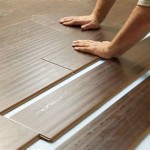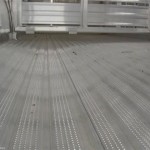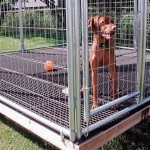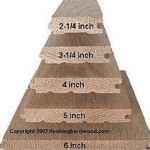Engineered Wood Flooring Installation Cost Per Square Metre
Engineered wood flooring has become a popular choice for homeowners seeking a balance between the aesthetic appeal of solid hardwood and the practicality of modern flooring solutions. Its layered construction offers enhanced stability and resistance to moisture compared to solid wood, making it suitable for a wider range of environments within a home. Understanding the factors influencing the installation cost per square metre is crucial for budgeting and making informed decisions about flooring projects. This article delves into the various aspects affecting the overall cost, providing a comprehensive overview for prospective buyers and renovators.
The cost of engineered wood flooring installation is not solely determined by the price of the flooring material itself. A multitude of variables come into play, influencing the final figure. These include the type of engineered wood, subfloor preparation requirements, the complexity of the installation process, geographical location, and the experience level of the installer. Each of these factors contributes to the overall cost, and a thorough assessment is necessary to obtain an accurate estimate.
The flooring material itself constitutes a significant portion of the overall installation cost. Engineered wood flooring is available in a wide range of species, thicknesses, and finishes, each with varying price points. Exotic wood species or those with unique grain patterns tend to be more expensive. The thickness of the wear layer, the top layer of real wood, also impacts the price, with thicker wear layers generally commanding a higher premium due to their increased durability and longevity. The finish applied to the flooring, whether it be a traditional lacquer or a more contemporary oiled finish, further contributes to the price differential.
Subfloor preparation is another critical element affecting the installation cost. A level and stable subfloor is essential for a successful and long-lasting engineered wood floor installation. Any imperfections, such as unevenness, cracks, or moisture issues, must be addressed prior to laying the new flooring. This may involve levelling compounds, plywood underlayment, or moisture barriers, all of which add to the overall cost. The extent of subfloor preparation required will depend on the condition of the existing subfloor and the specific requirements of the chosen engineered wood flooring product.
The method of installation also influences the cost per square metre. Engineered wood flooring can be installed using several methods, including glue-down, nail-down, and floating. Glue-down installations, where the planks are adhered directly to the subfloor, generally require more labor and specialized adhesives, resulting in a higher cost. Nail-down installations, typically used over wooden subfloors, also require specialized tools and expertise. Floating installations, where the planks are connected to each other but not directly to the subfloor, are often the most cost-effective option, but may not be suitable for all situations or types of engineered wood flooring.
Factors Influencing the Cost of Engineered Wood Flooring Material
The type of engineered wood flooring chosen has a direct correlation with the overall installation cost. Several factors related to the flooring itself contribute to the price variation. These encompass the wood species, the thickness of the wear layer, the core material, and the quality of the finish.
Wood Species: Engineered wood flooring is available in a diverse range of wood species, including oak, maple, walnut, hickory, and exotic options like bamboo and Brazilian cherry. Each species possesses unique characteristics in terms of grain pattern, color, and hardness. More common and readily available species like oak and maple are typically less expensive than rarer or imported species. The demand and supply dynamics of each species also play a role in determining the price.
Wear Layer Thickness: The wear layer is the top layer of real wood veneer that determines the floor's durability and resistance to wear and tear. A thicker wear layer allows for more sanding and refinishing over the floor's lifespan, extending its longevity. Consequently, engineered wood flooring with a thicker wear layer is generally more expensive than products with thinner wear layers. Common wear layer thicknesses range from 2mm to 6mm or more.
Core Material: The core of engineered wood flooring, beneath the wear layer, is typically constructed from multiple layers of plywood, high-density fiberboard (HDF), or softwood. The core material provides stability and resistance to moisture. HDF cores are generally more resistant to moisture than plywood cores, but may also be more expensive. The quality and construction of the core material significantly influence the overall performance and cost of the flooring.
Finish Quality: The finish applied to the engineered wood flooring protects the surface from scratches, stains, and fading. Common finish types include polyurethane, acrylic, and oil-based finishes. High-quality finishes offer superior durability and resistance to wear, but they also come at a higher cost. The number of coats applied and the application method also affect the finish's quality and cost.
Impact of Subfloor Preparation on Installation Cost
Proper subfloor preparation is paramount for a successful engineered wood flooring installation. An inadequate subfloor can lead to premature wear, uneven surfaces, and potential structural problems. The subfloor must be level, clean, dry, and structurally sound. The extent of preparation required will vary depending on the existing subfloor condition.
Leveling: An uneven subfloor is a common problem that must be addressed before installing engineered wood flooring. Even minor imperfections can cause the flooring to flex and creak, leading to damage over time. Leveling can be achieved using self-leveling compounds or by applying shims to low areas. The cost of leveling will depend on the severity of the unevenness and the materials used.
Cleaning: The subfloor must be thoroughly cleaned to remove any debris, dust, or contaminants that could interfere with the adhesion of the flooring or the installation process. Vacuuming and sweeping are essential first steps, but in some cases, more intensive cleaning methods may be required, such as scrubbing or degreasing. The cost of cleaning will depend on the type and amount of debris present.
Moisture Testing and Mitigation: Excess moisture in the subfloor is a major concern for engineered wood flooring installations. Moisture can cause the flooring to warp, buckle, or mold. It is essential to test the subfloor for moisture content using a moisture meter before installation. If moisture levels are too high, mitigation measures must be taken, such as installing a moisture barrier or allowing the subfloor to dry completely. Moisture mitigation can add significantly to the overall cost.
Repairing Damage: Cracks, holes, or other structural damage to the subfloor must be repaired before installing engineered wood flooring. Small cracks can be filled with patching compounds, while larger areas of damage may require more extensive repairs, such as replacing sections of the subfloor. The cost of repairing damage will depend on the extent and severity of the problem.
Labor Costs and Installation Complexity
Labor costs are a significant component of the overall engineered wood flooring installation cost per square metre. The complexity of the installation process, the experience level of the installer, and the geographical location all influence labor rates. More intricate installation patterns or challenging room layouts will typically result in higher labor costs.
Installation Method: As previously mentioned, the chosen installation method (glue-down, nail-down, or floating) affects labor costs. Glue-down and nail-down installations generally require more time and skill, resulting in higher labor charges compared to floating installations. The specific requirements of each method, such as the type of adhesive or fasteners used, also impact the cost.
Room Layout: The shape and size of the room can influence installation time and labor costs. Rooms with many corners, curves, or obstacles require more cuts and adjustments, increasing the amount of labor required. Simple, rectangular rooms are typically easier and faster to install, resulting in lower labor costs.
Installer Experience: The experience level of the installer plays a crucial role in determining the quality of the installation and the overall cost. Experienced installers are typically able to work more efficiently and accurately, minimizing errors and ensuring a professional finish. While experienced installers may charge higher hourly rates, their expertise can often save time and money in the long run by preventing problems that could lead to costly repairs or replacements.
Geographical Location: Labor rates for engineered wood flooring installation can vary significantly depending on the geographical location. Areas with a higher cost of living typically have higher labor rates than areas with a lower cost of living. The availability of qualified installers in a particular area can also influence labor rates.
In summary, the cost of engineered wood flooring installation per square metre is a multifaceted figure influenced by the material chosen, the necessary subfloor preparation, the installation method, and the prevailing labor rates. Thorough consideration of these components is essential for accurate budgeting and decision-making during flooring projects.

Wood Flooring Guide 2024 How Much Does Wooden Cost

How Much Does Wooden Floor Installation Cost In 2024 Mybuilder

Laminate Flooring Installation Cost Per Sqm Karma

How Much Should Wooden Flooring Cost In 2024 Checkatrade

Cost Of Installing Engineered Wood Flooring

Engineered Flooring Installation Cost In 2024 The Guys

How Much Does It Cost To Install Parquet Flooring Greyspace

Wood Flooring Guide 2024 How Much Does Wooden Cost

How Much Does Timber Floor Installation Cost In Perth

Cost Of Wood Flooring Direct
Related Posts








